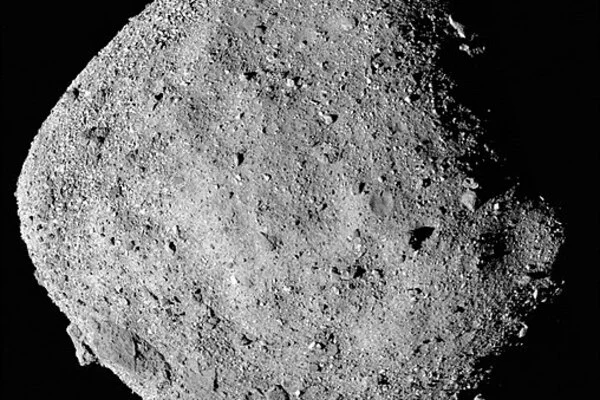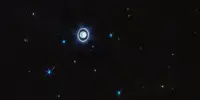After a two-year journey, NASA’s OSIRIS-REx mission has discovered water on the asteroid Bennu. Bennu was chosen for investigation because it is a carbonaceous chondritic rock—rich in organics and assumed to have formed in the early, oxygen-rich days of the solar system. Understanding Bennu’s physical makeup and how it was cut into its 500-meter-long shape can help us comprehend how asteroids formed in the past, as well as what the solar system was like in its early days.
Thanks to data from the probe’s spectrometers, the probe, which is 12 miles (19 kilometers) from the surface, has identified water trapped under the asteroid’s clay minerals. Between mid-August and early December, instruments aboard OSIRIS-REx — the Origins, Spectral Interpretation, Resource Identification, Security, and Regolith Explorer — began making scientific observations of Bennu during its two-year, 1.4 million-mile (2.2 million-kilometer) journey to the asteroid.
Two of these instruments detected molecules on the asteroid with linked oxygen and hydrogen atoms, which are known as hydroxyls. According to NASA, these hydroxyls may be found across the asteroid in water-bearing clay minerals, indicating that Bennu’s stony surface originally had contact with water.
The presence of hydrated minerals across the asteroid confirms that Bennu, a remnant from early in the formation of the solar system, is an excellent specimen for the OSIRIS-REx mission to study the composition of primitive volatiles and organics.
Amy Simon
But don’t think Bennu was once brimming with lakes, or even puddles. According to NASA, the asteroid is actually too small to have ever hosted water in liquid form, but its parent body could have.
“The presence of hydrated minerals across the asteroid confirms that Bennu, a remnant from early in the formation of the solar system, is an excellent specimen for the OSIRIS-REx mission to study the composition of primitive volatiles and organics,” Amy Simon, OVIRS deputy instrument scientist at NASA’s Goddard Space Flight Center, said in a statement.
NASA’s first asteroid sample return mission is OSIRIS-REx. When the spacecraft lands on Bennu’s surface in July 2020, it will collect 4.4 pounds (2 kilos) of rock to take back to Earth in a capsule.

“When the mission returns samples of this material to Earth in 2023, scientists will acquire a treasure mine of fresh information on the history and evolution of our solar system,” Simon added.
Weathering is a peculiar process on Bennu, it turns out. While most asteroids and the moon darken (or redden) as they age, Bennu actually brightens (or gets bluer). “It informs us that something about Bennu’s surface is extremely distinct from other planetary objects we’ve studied,” DellaGiustina explains. The darker the surface of Bennu, the better conserved that area should be. Nightingale happens to be one of Bennu’s darkest locations, which implies it could represent an undisturbed record of some of the most ancient events in the solar system.
In just a few weeks, OSIRIS-REx will attempt an audacious maneuver to collect a sample of rubble and small rock from Bennu’s surface and bring it to Earth for scientists to study. Since December 2018, the spacecraft has been orbiting Bennu from roughly a kilometer or so away and studying it with a slew of instruments. The sample collection, however, is the mission’s marquee event.
Goddard is in charge of OSIRIS-overall REx’s mission management, systems engineering, and safety and mission assurance. The primary investigator is Dante Lauretta of the University of Arizona in Tucson, which also oversees the science team and the mission’s science observation planning and data processing. The spacecraft was built and is operated by Lockheed Martin Space Systems in Denver. The OSIRIS-REx spacecraft is being navigated by Goddard and KinetX Aerospace. The OSIRIS-REx mission is the third in NASA’s New Frontiers Program. The New Frontiers Program is managed by NASA’s Marshall Space Flight Center in Huntsville, Alabama, for the Science Mission Directorate in Washington.
















